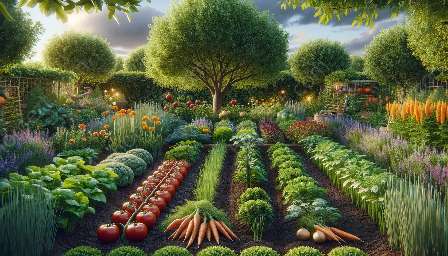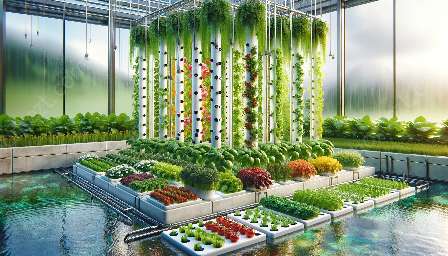Creating a thriving edible garden involves more than just planting and watering. Maintaining a healthy garden also means being proactive about natural pest control methods to protect your fruits and vegetables. While chemical pesticides may seem like a quick fix, they can harm the natural ecosystem and end up affecting the flavor and safety of your produce. This article explores a variety of effective, organic, and sustainable pest control methods that are compatible with edible plants and fruits, ensuring a bountiful harvest without compromising on quality or safety.
Companion Planting
Companion planting is a natural and effective way to control pests in your edible garden. By strategically planting certain herbs, flowers, or vegetables alongside your crops, you can deter pests and attract beneficial insects that help keep your garden healthy. For example, marigolds are known for repelling many common garden pests, while attracting pollinators like bees and butterflies. Planting basil near tomatoes can help to repel pests while also improving the flavor of the tomatoes. Research companion planting options that are suitable for the specific pests and plants in your garden to create a naturally pest-resistant environment.
Biological Control
Introducing natural predators to your garden can be an effective way to manage pests without the use of chemicals. Ladybugs, lacewings, and praying mantises are just a few examples of beneficial insects that can help keep pest populations in check. These predators feed on common garden pests such as aphids, caterpillars, and mites, providing a natural and sustainable form of pest control. Consider creating habitats for these beneficial insects by adding native plants, providing water sources, and minimizing pesticide use to encourage a balanced ecosystem in your garden.
Organic Sprays and Solutions
There are numerous organic sprays and solutions that can be used to control pests in edible gardens. Neem oil, for example, is derived from the neem tree and acts as a natural insect repellent while also disrupting the growth and reproduction of many pests. Garlic and pepper sprays are effective at repelling pests such as aphids and caterpillars, and can be easily made at home using simple ingredients. Additionally, soapy water sprays can suffocate soft-bodied pests like mites and aphids, providing a non-toxic method of pest control for your edible plants and fruits.
Physical Barriers
Creating physical barriers is another natural pest control method that can protect your edible garden. For example, covering your plants with floating row covers can prevent insect pests from reaching your crops, while also providing some protection from extreme weather conditions. Installing netting or mesh around fruit trees or berry bushes can help to deter birds and other wildlife from consuming your harvest. Using physical barriers is an effective and non-invasive way to protect your garden while minimizing harm to the surrounding environment.
Cultural Practices
Implementing cultural practices can also contribute to natural pest management in your garden. Regularly removing weeds and debris helps eliminate hiding places for pests, while also reducing the likelihood of disease outbreaks. Additionally, rotating crops and practicing proper spacing between plants can prevent the buildup of pest populations and minimize the spread of infestations. By incorporating healthy and sustainable gardening techniques, you can support a balanced ecosystem that naturally resists pest pressures.
Conclusion
When it comes to edible gardens, maintaining a harmonious balance between plant health and pest control is essential for a successful harvest. Embracing natural pest control methods not only protects your plants and fruits, but also contributes to a healthier environment for all living organisms in and around your garden. By integrating companion planting, biological control, organic sprays, physical barriers, and cultural practices, you can create a resilient and thriving edible garden that produces delicious and nutritious yields year after year.


















